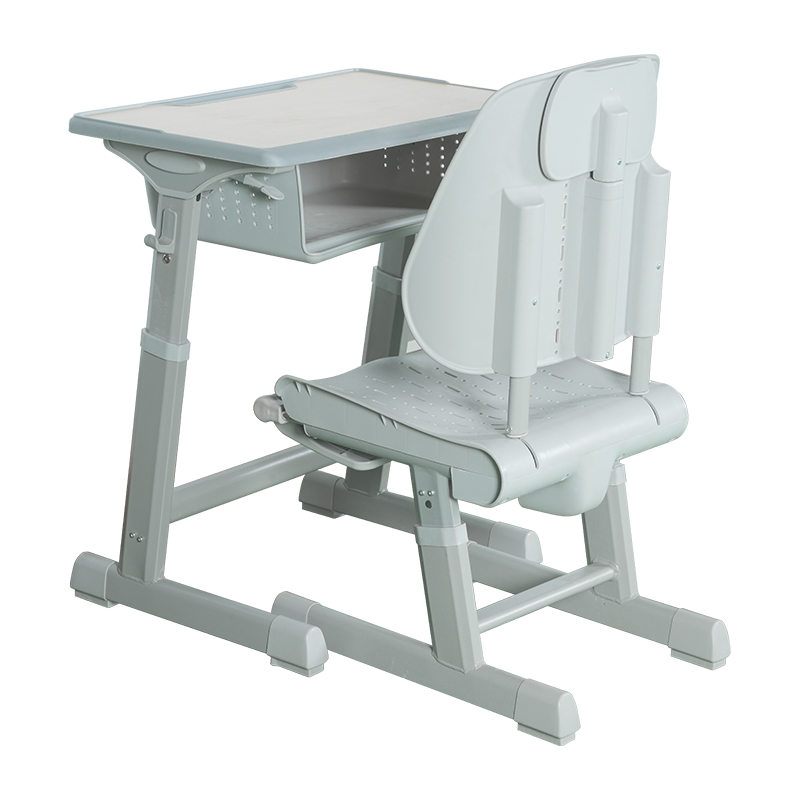In todays educational settings, the importance of ergonomics in classroom furniture cannot be overstated. The ergonomics of modern school table and chair designs are central to creating a learning environment that promotes student well-being and academic success. Proper ergonomic design minimizes physical strain, reduces discomfort, and helps students maintain better posture throughout the day, which can increased concentration and engagement.

The consideration in ergonomic classroom furniture is adjustability. Modern school tables and chairs are often designed with adjustable features to accommodate students of different ages, body sizes, and sitting preferences. This flexibility ensures that the furniture can be tailored to provide comfort. For example, adjustable chair heights allow students to sit with their feet flat on the ground and their knees at a 90-degree angle, which is essential for good posture. Likewise, adjustable desks allow for the correct positioning of the workspace to avoid strain on the wrists, back, and neck.
In addition to adjustability, the shape and design of the seating and desk surfaces are crucial. Chairs with a contoured backrest provide lumbar support, promoting better posture and reducing the risk of back pain. Seat designs that are wide enough and made from supportive materials ensure that students can sit comfortably for longer periods without feeling fatigued. Tables that are angled or tilted slightly also reduce neck strain by allowing students to work at a more natural angle, whether they are writing, reading, or using technology.
The materials used in modern school tables and chairs also play an important role in ergonomic design. Lightweight, durable materials like plastic or metal ensure that the furniture is easy to move and adjust while maintaining its strength and stability. The surface finish of desks and chairs can also impact comfort—smooth, non-reflective surfaces reduce glare and eye strain, creating a more conducive environment for reading and writing.
Security of Classroom Plastic Study Table
When selecting furniture for educational spaces, security is a fundamental consideration, especially for pieces like the classroom plastic study table. Given that these tables are used by a large number of students over long periods of time, ensuring their safety is essential to maintaining a positive learning environment.
One of the primary security concerns with classroom plastic study tables is their structural integrity. These tables are designed to withstand heavy use, and their materials must be durable and resistant to wear and tear. Many classroom plastic study tables are made from high-density polyethylene (HDPE), polypropylene, or other strong plastic composites that offer resistance to cracking, impact, and moisture. These materials not only ensure the table remains stable but also prevent the formation of sharp edges that could potentially injure students.
The construction of the table is another key aspect of its security. Classroom plastic study tables are typically equipped with reinforced corners and smooth edges to reduce the risk of accidents. Smooth, rounded corners and edges help prevent injuries that might occur if a student accidentally bumps into the table. Additionally, many plastic tables feature anti-slip feet or rubber bases that provide stability and prevent the table from moving during use. This is particularly important in classrooms where students may be engaged in group work or activities that involve the use of technology, as these activities often require the furniture to remain stationary.
Another security consideration is the toxicity of the materials used in the tables construction. Schools prioritize student health and safety by ensuring that all classroom furniture, including plastic study tables, is free from harmful chemicals like BPA, phthalates. Many manufacturers now offer furniture that is certified for low emissions of volatile organic compounds (VOCs) and other potentially harmful substances. This certification ensures that the classroom plastic study table is safe for students, contributing to a healthier learning environment.
Moreover, the design of the table often includes features that enhance its safety, such as rounded edges and secure locking mechanisms on adjustable models. These elements ensure that the furniture remains stable and poses no risk to students during daily activities. When choosing plastic furniture for a classroom, schools should also look for models that are built with non-toxic paints or finishes, further any potential health risks.


 English
English русский
русский Español
Español عربى
عربى
